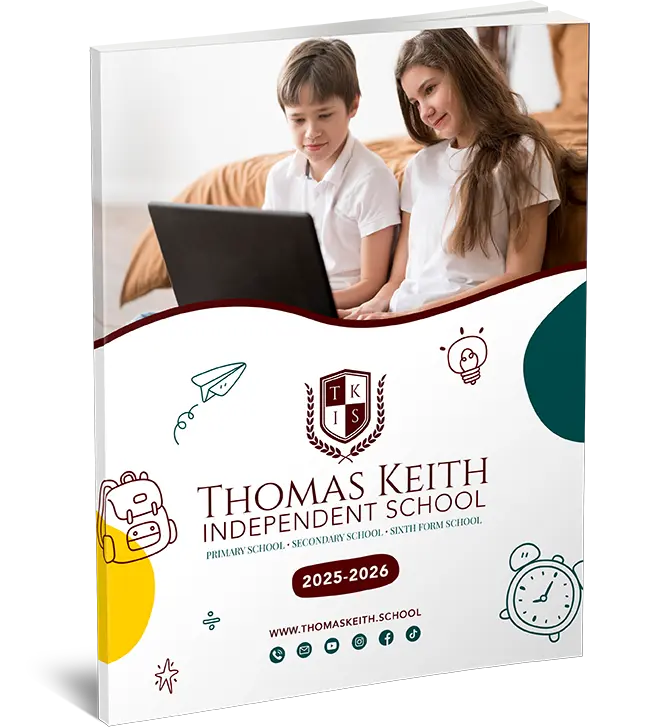
Business Studies A Level Revision
Business Studies A Level Revision Comprehensive Guide
A-Level and AS-Level business studies need a targeted knowledge of ideas, theories, and practical applications. This guide uses the Thomas Keith Online Independent School as a practical reference to show how structured learning could enhance knowledge and covers the key subjects including examples.

Key Subjects for Edit
- Business Objectives
Analysing decisions depends on an awareness of corporate objectives. Important goals consisting:
Maximising profits is reaching the best potential financial gain.
Development: Increasing market share; and income; geographical presence.
Especially crucial for newly founded or failing companies is survival.
Corporate Social Responsibility (CSR) is about juggling profit with good social influence.
Companies like Patagonia, for instance, emphasise CSR by pledging sustainability while still turning a profit.
Expanded Details: Depending on their level of growth, companies can give different priorities top importance. Start-ups, for instance, might prioritise survival and client acquisition while mature businesses sometimes aim for profit maximisation and market leadership. Global themes including environmental sustainability have also driven CSR to front stage and shaped consumer and investor choices.
- Forms of Company Structures
Every company structure has particular advantages, disadvantages, and features:
Run and owned by one person is a sole proprietorship. Easy and cheap to start yet carries endless liability.
Owned by two or more people sharing obligations, profits, and duties, partnerships
Private Limited Company (Ltd): Though liability is limited, private ownership of the shares calls for tighter compliance.
Public Limited Company (Plc): Though it requires more openness, publicly traded shares allow for significant investments.
Knowing the legal and operational differences between these organisations is therefore rather important. For instance, whereas limited businesses have to follow rules including yearly reporting, partnerships sometimes establish duties and profit-sharing ratios using agreements. Furthermore affecting taxation, risk exposure, and growth possibilities is the structural option.
- surroundings outside of oneself
Companies run inside an external environment including:
Economic Factors: Exchange rates, inflation, and unemployment affect demand and company expenses.
Political and legal factors include labour laws, taxes, and rules.
Social aspects include consumer behaviour, cultural trends, and demographics.
Case Study: The effects of Brexit on companies underlined the adjusting to changes in the surroundings.
Expanded Analysis: Companies must constantly analyse trends since the external surroundings are changing. For example, changes in technology have upended established businesses and spawned digital marketing and e-commerce. Geopolitical events can also change supply networks, therefore influencing delivery times and costs.
- Marketing
Good marketing guarantees items satisfy consumer wants. Principal elements consistofn:
Primary research—surveys and focus groups—as well as secondary research—industry publications and government data—for market analysis.
A marketing mix is:
Products: lifetime, branding, and quality.
Strategies include price skimming and penetration to pricing to help shape prices.
Location: RetaiInternetternet among other distribution outlets.
Advertising, public relations, and sales promotions all help.
Real-world Example: Global campaigns of Coca-Cola show good application of the marketing mix.
Target audience affects the variation in marketing methods. Luxury companies, for instance, stress quality and uniqueness, whereas mass-market items highlight accessibility and cost. Digital marketing has also brought instruments like social media advertising and influencer relationships that let companies properly target particular groups.
5. Operations Management
Operations management concentrates on effectively manufacturing goods or services:
Efficiency and Productivity: Simplifying procedures helps to lower expenses.
Guaranturing that goods satisfy criteria is quality assurance.
Product ManaJust-in-Timen- Time, or JIT, reduces storage expenses by only ordering items as needed.
Balances ordering withholding expenses define the Economic Order Quantity (EOQ).
Lean manufacturing methods including process optimisation and waste reduction have become somewhat well-known in operations management. To increase accuracy and cut labour expenses, companies also depend on technologies including artificial intelligence and automation. Total Quality Management (TQM) among other quality assurance techniques supports customer satisfaction and high standards.
- Money Management
Evaluating the state of business depends on an awareness of financial performance:
Important Financial Documents:
Income Statement: Displayisome time of time profitability.
Showing assets, liabilities, and equity, a balance sheet
Ratio Study:
Liquidity ratios: Track temporary financial situation.
Reiterability Ratios: Eprofit-generatingnerating performance.
Review the efficiency ratios—that is, the way resources are used.
Financial management also entails planning and forecasting, which enable companies to project future revenues and expenses. Long-term planning calls for tools for decision-making including break-even analysis and investment assessment including Net Present Value (NPV) and Internal Rate of Return (IRR).
- Personnel Resources
Human resources mostly address motivation, retention, and recruitment:
Recruitment: Person specifications, job descriptions, selection procedures.
Training—off-the-job and on-the-job.
Motivation theories:
Hierarchy of Needs developed by Maslow.
Herzberg Two- Factor Theory.
Styles of Leadership: autocratic, democratic, laissez-faire.
For instance, Google’s emphasis on staff satisfaction points to sound HR policies.
Further insights: Diversity and inclusion have taken the front stage in HR management, therefore fostering innovation and creativity. Like Key Performance Indicators (KPIs), performance management methods guarantee staff members complement corporate objectives. Retention techniques help to lower tuusingeans of competitive pay and chances for professional growth.
- Strategic Choosing of Action
Strategic instruments let companies spot risks and opportunities:
SWOT analysis assesses possibilities, threats, strengths, and weaknesses.
Examining growth strategies—market penetration, product development, market development, and diversification—the Ansoff Matrix looks at
Porter’s Five Forces examine industry competitive forces.
Strategic planning entails long-term goals and resource allocation, thereby addressing both Scenario planning, for instance, helps companies be ready for possible hazards. Frequent strategy review guarantees congruence with organisational objectives and the state of the market.
The function of Thomas Keith Online Independent School
Thomas Keith Online Independent School offers AS-Level and A-Level Business with Studies a methodical approach. Their sources consist in:
Clearly explained lectures covering all syllabus subjects.
Interactive learning tools such as virtual case studies and quizzes help to reinforce ideas.
Practice tests in line with exam board criteria help students to be properly ready.
Lessons use practical business situations to help students grasp theoretical ideas.
For instance, in a recent session Thomas Keith’s students examined worldwide brand marketing techniques, therefore bridging the theoretical and practice gap.
Students who get tailored comments also ensure they know their areas of strength and places for development. Additionally providing variable learning schedules to meet various student needs is the platform.
![]()
A-Level Business Studies Study Notes
Know Important Terms: Make business term flashcards.
Familiarise yourself with question forms and mark systems by working past papers.
Apply ideas from theory to real-life companies.
Break out subjects one at a time to prevent overwhelm.
Joining study groups helps one improve knowledge by talking about subjects with others.
Use Online Resources: Thomas Keith Online Independent School offers interactive tools and organised direction to help learning.
Commonly asked questions (F&Q)
Q1: Apart from A-Level Business Studies, what distinguishes AS?
A1: Covering the first half of the whole A-Level syllabus, AS-Level offers fundamental information developed from this with more thorough research and advanced subjects.
Q2: How can I shine on business tests?
A2: Emphasise core ideas, work consistently on past paper stacked to take advantage of tools like those Thomas Keith Online Independent School offers.
Q3: Thomas Keith Online Independent School provides what resources?
A3: Their materials comprise recorded lectures, interactive tools, and practice tests catered to the A-Level and AS-Level Business Studies syllabus.
Q4: Which subjects hold the most weight?
A4: Exam success depends on fundamental disciplines including marketing, finance, and strategic decision-making.
Q5: How can I properly allocate my time throughout revision?
A5: To guarantee thorough preparation, make a revision schedule, rank difficult subjects, and establish reasonable daily targets.
Q6: How should I structure my revision plan?
A6: Create a schedule, cover all topics, and take regular breaks.
Q7: What are effective revision techniques?
A7: Use notes, mind maps, and group discussions.
Q8: How can I apply theory in exams?
A8: Practise past papers and apply concepts to real-world scenarios.
Q9: What mistakes should I avoid?
A9: Don’t just memorise—understand concepts, follow exam structure, and stay updated on business news.
Q10: How do I manage time forth for the exam?
A10: Practise timed answers, allocate time by mark weight, and don’t overthink one question.
In conclusion
AS-Level and A-Level Business Studies call for a clear awareness of theoretical models and their pragmatic uses. Students who concentrate on important subjects such as marketing, finance, and operations will be ready. Resources like those from Thomas Keith Online Independent School offer organised support, which helps to make revision efficient and easy. Success is within reach with constant work and effective planning. Expanding knusingmeans of ongoing education, group projects, and the study of practical examples helps a student to become even more outstanding.






